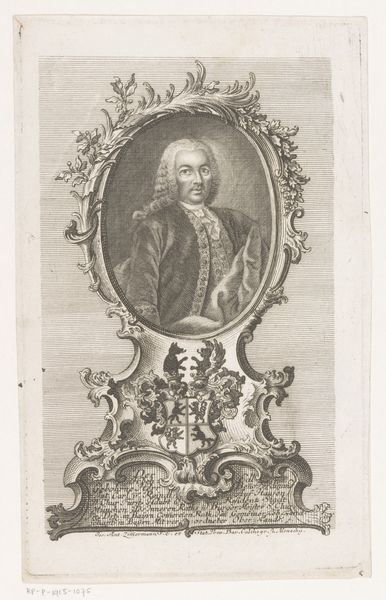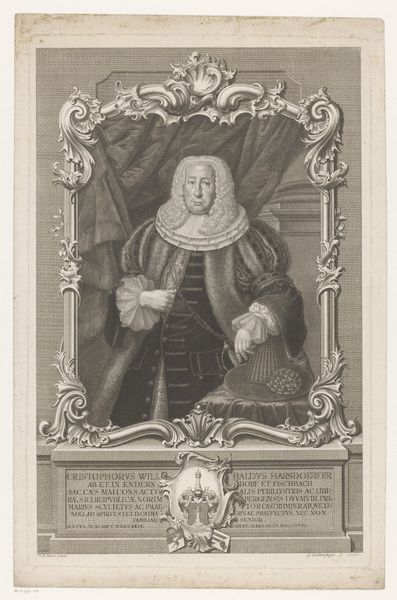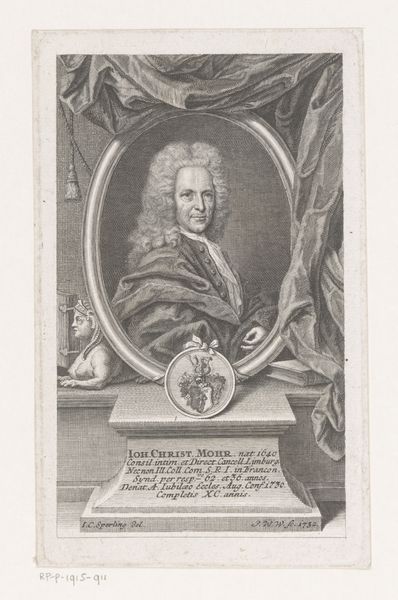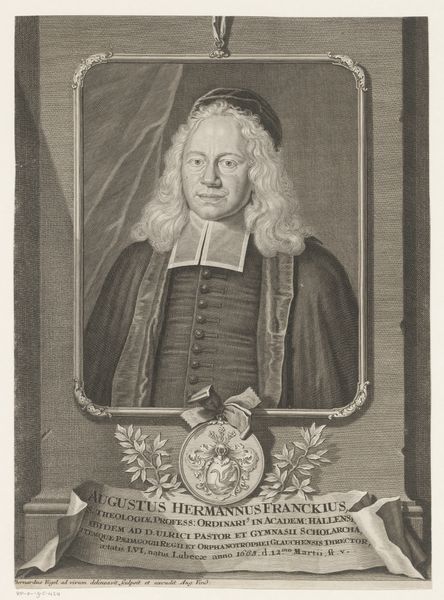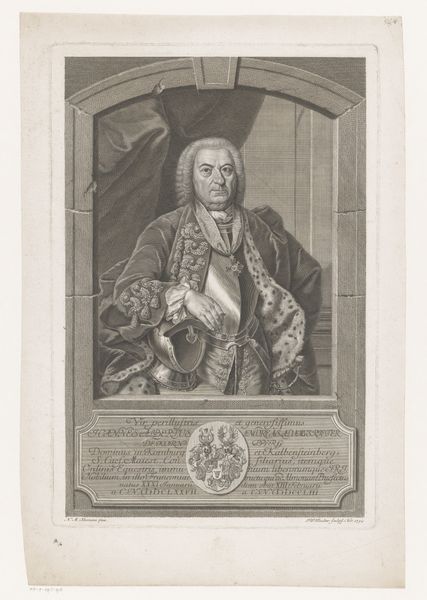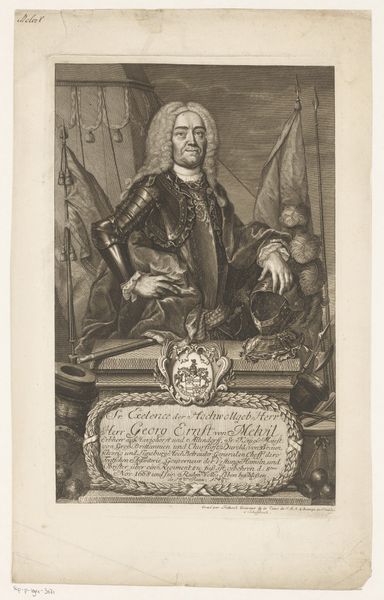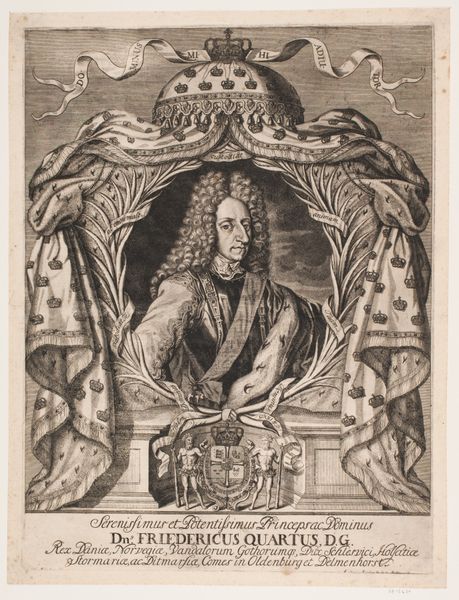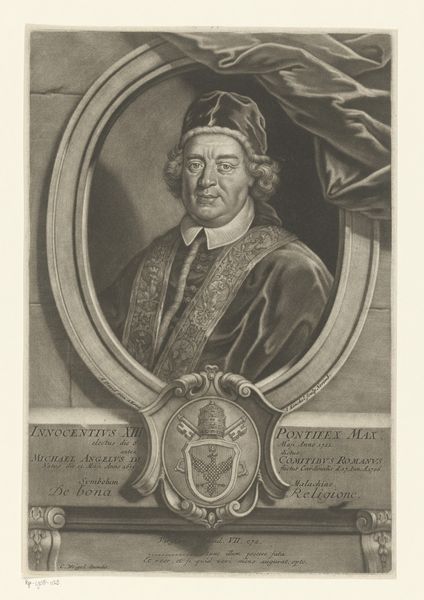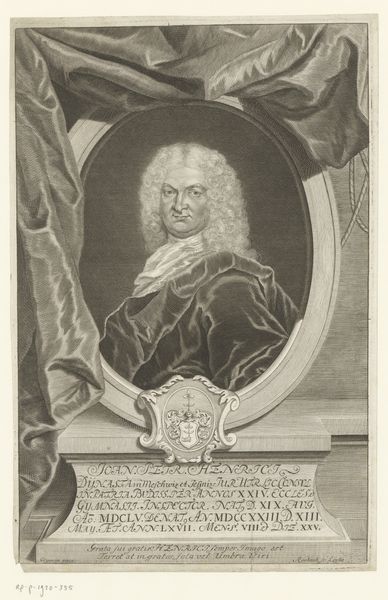
print, engraving
#
portrait
#
baroque
# print
#
old engraving style
#
history-painting
#
engraving
Dimensions: height 180 mm, width 142 mm
Copyright: Rijks Museum: Open Domain
Curator: Looking at this engraving, I’m immediately struck by the density of information and the formality of the sitter’s pose. Editor: Indeed. Here we have Leonhard Heckenauer's "Portret van Jacob Otto," dating back to 1685, housed at the Rijksmuseum. As a print, an engraving, the reproduction reveals a wider distribution and reception of Otto's persona. What details stand out to you? Curator: The swirling banners inscribed with Latin phrases surrounding the central figure! The visual texture created by the engraved lines is really captivating. The lines act as both ornamentation and inscription. Editor: Absolutely, and those swirling banners – they're practically baroque theater! The choice of the print medium suggests an engagement with ideas of accessibility and distribution of status in 17th-century society. It also speaks to a growing market for printed portraits beyond the elite circles who commissioned painted portraits. Curator: And that crucifix perched casually behind the man, gives us some sense of the religious atmosphere or leanings, despite the official capacity that is conferred to the portrayed. Editor: A reminder, perhaps, of the complex intertwining of civic duty and religious faith in the era. The very act of replicating and distributing Otto’s image as a civil leader becomes an assertion of civic ideals but relies on cheap print-making production and potentially low skilled workers to disseminate the image. Curator: So, beyond just conveying Otto's status and accomplishments, Heckenauer's print provides access into the relationship between portraiture, print culture, social standing and civic authority in the 17th Century. Editor: A fruitful combination, I believe! One walks away not just seeing a portrait, but recognizing the very material conditions by which it exists, and how such things shaped self-presentation at the time.
Comments
No comments
Be the first to comment and join the conversation on the ultimate creative platform.



